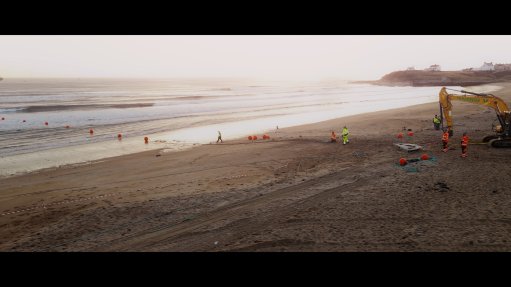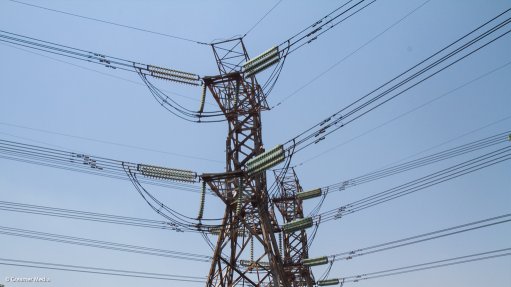Sustained investment in transport infrastructure to drive growth and competitiveness – SAICE
Given South Africa's significant infrastructure challenges, sustained investment in transport infrastructure is critical to drive economic growth and improve the quality of life for citizens, says industry professionals' organisation South African Institution of Civil Engineering (SAICE) CEO Sekadi Phayane-Shakhane.
Improved infrastructure enhances South Africa's competitiveness on the global stage, reduces logistics costs and provides better access to underserved areas in the country.
Reliable infrastructure is one of the key factors considered by potential investors when deciding to invest in a country.
Sustained investment in South Africa's transport infrastructure is critical. Robust transportation networks enhance the movement of goods and services, thereby making it possible for businesses to operate efficiently and access markets, which facilitates trade and commerce and drives economic growth.
Transport infrastructure also enables communities to access work, education and healthcare.
The involvement of the private sector in infrastructure development is vital for South Africa’s long-term growth and prosperity.
Infrastructure development is a monumental task and one that requires a collaborative effort across various sectors of society, and the private sector has both the skills and financial muscle to play a critical role in this endeavour, adds Phayane-Shakhane.
The infrastructure needs and the scale of investment required far exceeds what the government alone can provide. Private-sector participation through public-private partnerships (PPPs) not only supplements public funds but can also unlock additional skilled resources.
This injection of private-sector capacity is critical to accelerate the implementation of key infrastructure projects, she notes.
Large-scale infrastructure projects inherently carry significant risks, including financial, operational and political risk.
PPPs carefully analyse risk, and risks can be more effectively shared between the public and private sectors, thereby reducing the burden on the government and spreading the risks across multiple stakeholder,s and making projects more viable and sustainable.
The private sector’s ability to manage risks, such as design and construction risks, prevents delays and budget overruns.
Robust project preparation allows market fluctuations to be absorbed and ensures that the impact of these risks is minimised, benefiting both the project and the public, Phayane-Shakhane says.
One of the most pressing challenges in infrastructure development is the availability of skilled professionals to prepare feasibility studies and establish the viability of bankable projects.
However, the recently launched 'Construction Book 24/25' showcases 153 infrastructure projects with a total capital expenditure of R158.54-billion. Half of these are for transportation infrastructure including multiple road projects, rail, ports and airports.
The prominent investment in such valuable economic infrastructure is applauded by SAICE, she emphasises.
“The infrastructure projects we see in the Construction Book build economic infrastructure, meaning the infrastructure supports business once it is in place,” says SAICE Advocacy Pillar champion Wynand Dreyer.
“The creation of such projects generates direct and indirect work opportunities for designers, constructors, and materials, equipment and plant suppliers. This, in addition, in the case of water and sanitation, provides the essentials for life and health to communities.”
Additionally, transport has been a fertile ground for technical innovation with the adoption of advanced technologies giving rise to a branch of industry, Intelligent Transport Systems.
The adoption of technologies, from electronic tolling, weigh-in motion, video monitoring and management of traffic, railway signalling to autonomous cars, buses and trucks has made a significant contribution to the efficiency of all modes of transport.
With continuing advances, it can be expected that technology will play an ever-increasing role in our transport, logistics and supply chains, adds Dreyer.
Further, as projects are prepared, they need to be aligned with national development goals, integrated into the comprehensive transportation strategy and assigned a priority that addresses current and future needs.
Clear governance structures and monitoring mechanisms are necessary to ensure that projects are delivered and funds used efficiently and effectively.
This is how SAICE expects public trust to rebuild, and for ongoing investment to be encouraged.
To ensure that the spend on new assets remains profitable in the long term, rather than becoming liabilities, maintenance must not be considered a cost but an investment in preserving the functionality and resilience of these critical systems, emphasises Phayane-Shakhane.
“Preventive maintenance is far more cost-effective than reactive maintenance. By regularly servicing and upgrading infrastructure, higher costs associated with emergency repairs, replacement, or even reconstruction after failure can be avoided."
Article Enquiry
Email Article
Save Article
Feedback
To advertise email advertising@creamermedia.co.za or click here
Comments
Announcements
What's On
Subscribe to improve your user experience...
Option 1 (equivalent of R125 a month):
Receive a weekly copy of Creamer Media's Engineering News & Mining Weekly magazine
(print copy for those in South Africa and e-magazine for those outside of South Africa)
Receive daily email newsletters
Access to full search results
Access archive of magazine back copies
Access to Projects in Progress
Access to ONE Research Report of your choice in PDF format
Option 2 (equivalent of R375 a month):
All benefits from Option 1
PLUS
Access to Creamer Media's Research Channel Africa for ALL Research Reports, in PDF format, on various industrial and mining sectors
including Electricity; Water; Energy Transition; Hydrogen; Roads, Rail and Ports; Coal; Gold; Platinum; Battery Metals; etc.
Already a subscriber?
Forgotten your password?
Receive weekly copy of Creamer Media's Engineering News & Mining Weekly magazine (print copy for those in South Africa and e-magazine for those outside of South Africa)
➕
Recieve daily email newsletters
➕
Access to full search results
➕
Access archive of magazine back copies
➕
Access to Projects in Progress
➕
Access to ONE Research Report of your choice in PDF format
RESEARCH CHANNEL AFRICA
R4500 (equivalent of R375 a month)
SUBSCRIBEAll benefits from Option 1
➕
Access to Creamer Media's Research Channel Africa for ALL Research Reports on various industrial and mining sectors, in PDF format, including on:
Electricity
➕
Water
➕
Energy Transition
➕
Hydrogen
➕
Roads, Rail and Ports
➕
Coal
➕
Gold
➕
Platinum
➕
Battery Metals
➕
etc.
Receive all benefits from Option 1 or Option 2 delivered to numerous people at your company
➕
Multiple User names and Passwords for simultaneous log-ins
➕
Intranet integration access to all in your organisation

















